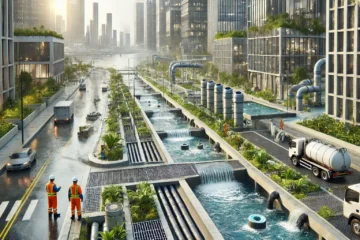Building Information Modeling (BIM): A Digital Revolution in Construction
Building Information Modeling (BIM) is a digital representation of physical and functional characteristics of places. It is a process involving the generation and management of digital representations of physical and functional characteristics of places. These digital representations can be used to inform and support design, engineering, construction, and facility management processes.
Core Concepts of BIM
- 3D Modeling: Creating detailed 3D models of buildings and infrastructure.
- Virtual Design and Construction (VDC): Using BIM to simulate and visualize construction processes.
- Information Modeling: Embedding data and information within the 3D models.
- Collaboration: Facilitating collaboration between different project stakeholders.
Benefits of BIM
- Improved Design Coordination: BIM helps identify and resolve design clashes early in the project lifecycle, reducing costly rework.
- Enhanced Construction Productivity: BIM-based construction planning and scheduling can streamline construction processes and reduce construction time.
- Improved Facility Management: BIM models can be used to optimize facility management, maintenance, and operations.
- Enhanced Safety: BIM can be used to identify potential safety hazards and develop safety plans.
- Reduced Costs: By reducing errors, waste, and delays, BIM can significantly reduce project costs.
- Improved Sustainability: BIM can be used to design more sustainable buildings by optimizing energy efficiency and material usage.
Levels of BIM Implementation
- Level 0: 2D CAD drawings without any information exchange between software.
- Level 1: 3D models created in separate software, with limited information exchange.
- Level 2: 3D models with information exchange between software, but limited collaboration.
- Level 3: Integrated 3D models with information exchange and collaboration.
- Level 4: 5D BIM with cost and schedule information integrated into the model.
- Level 5: 6D BIM with facility management information integrated into the model.
- Level 7: 7D BIM with sustainability and lifecycle information integrated into the model.
Future of BIM
The future of BIM is bright, with continuous advancements in technology and software. We can expect to see further integration of BIM with other technologies, such as artificial intelligence, machine learning, and augmented reality. This will lead to even more efficient and innovative building design and construction processes.


